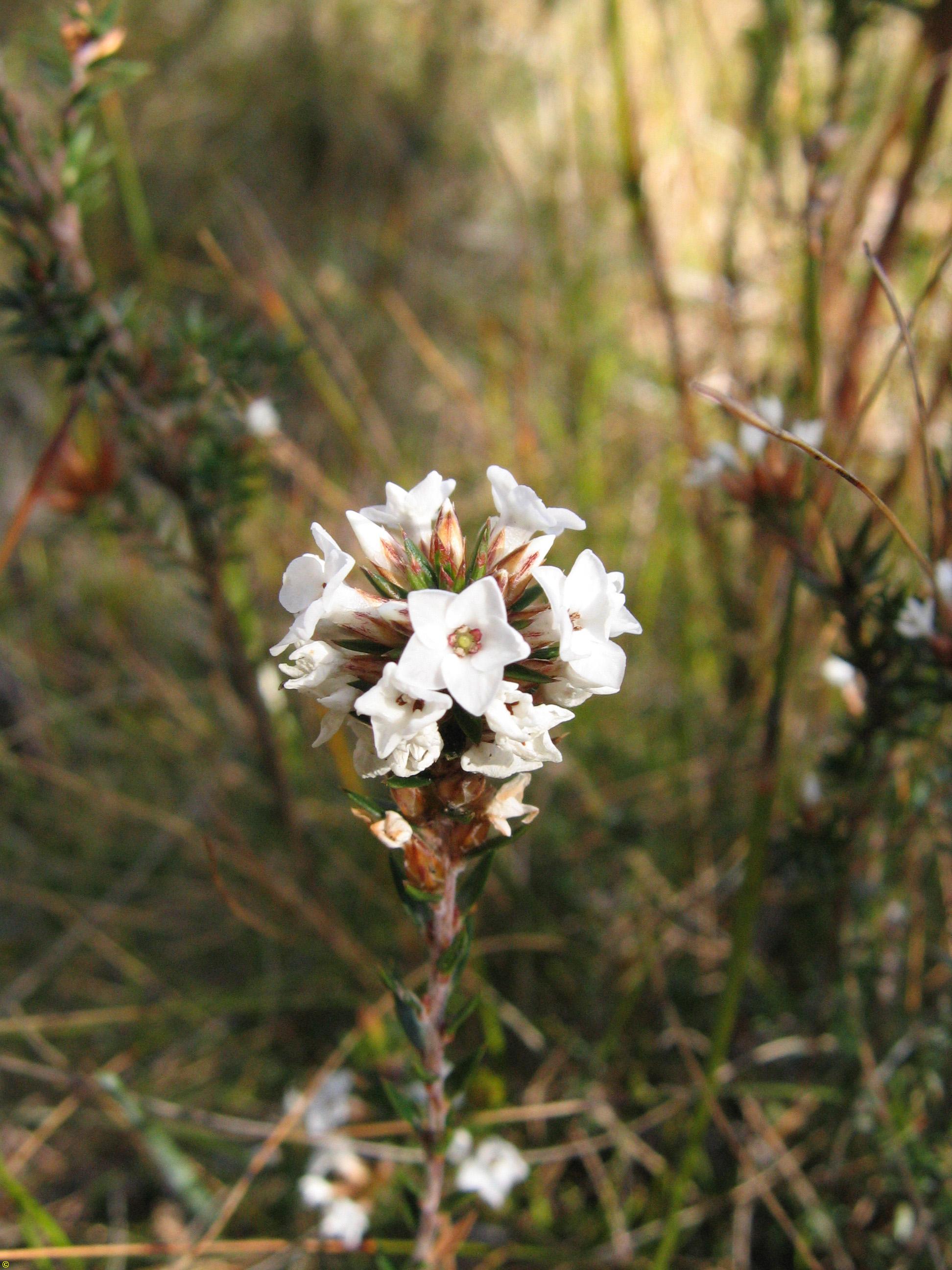Scientific Name: Epacris lanuginosa
Common Name: swamp heath
Family Classification (Clade): Eudicots
Family: Ericaceae
Form Description: Shrub, often branched near the base with slender erect stems, often much larger (west coast).
Height (m): 0.3 – 0.9
Flowers: White, bracts and sepals straw-coloured or brown, papery.
Fruit: Papery capsule
Municipality
Plant Communities
Habitat Notes
Widespread, abundant in wet heaths, sea level to 1000m.
Site Tolerance
Moist, Waterlogged
Soil Tolerance
Poorly-drained, Well-drained
Frost Tolerance
Hardy
General Notes
Bird attracting. Susceptible to Phytophthora cinnamomi.
Propagation Calendar
-
Flowering Month
Jan Feb Mar Apr May Jun Jul Aug Sep Oct Nov Dec -
Seed Collecting Month
Jan Feb Mar Apr May Jun Jul Aug Sep Oct Nov Dec -
Sowing Month
Jan Feb Mar Apr May Jun Jul Aug Sep Oct Nov Dec -
Cutting Month
Jan Feb Mar Apr May Jun Jul Aug Sep Oct Nov Dec
Propagation Method
Seed Information
Seed Collection
Difficult to grow from seed. When the lower capsule on the stem has opened the capsules higher on the stem are ready to collect. Place upside down in paper bags. Dry until they open then lightly thresh.
Seed Treatment Method
Smoke Smoke treatment improves germination in some species. Smokey products, e.g. smokey vermiculite, can be purchased and applied to the sown seed, or sown seeds can be treated directly with smoke from a source such as a drum with a fire and hose.
Seed Treatment Notes
Smoke treatment has been found to significantly improve results for species with smaller seeds. Species with woody fruits and larger seeds are not responsive. Seed of some species exhibits a dormancy which is reportedly overcome by storage in a dark place for 3- 6 months. The bog method and older seed may improve results. If using bog method seed should be spread over surface of propagation mixture. If the medium is then kept constantly moist, germination should occur within 10-20 weeks.
Cutting & Division Information
Grown from tip cuttings, best taken in March and placed into individual tubes. This avoids problems in the growing on process due to the very fine root systems.
